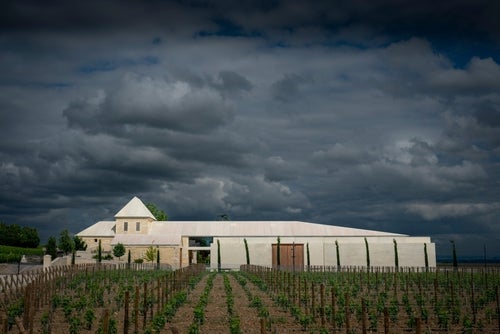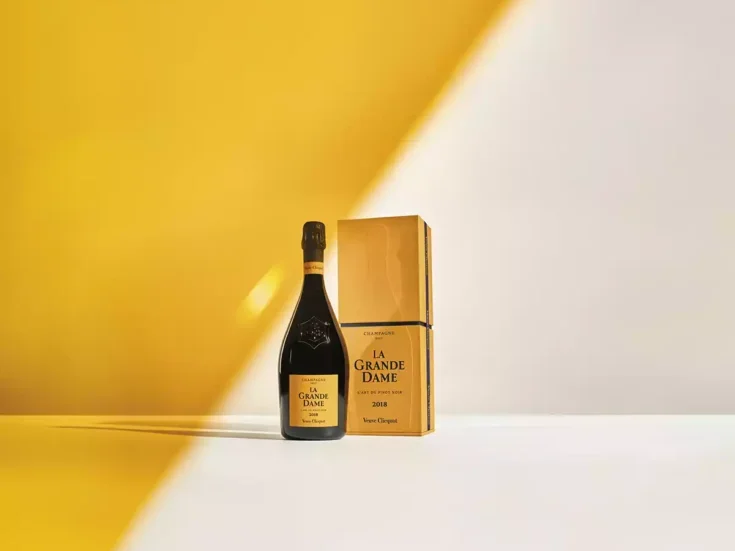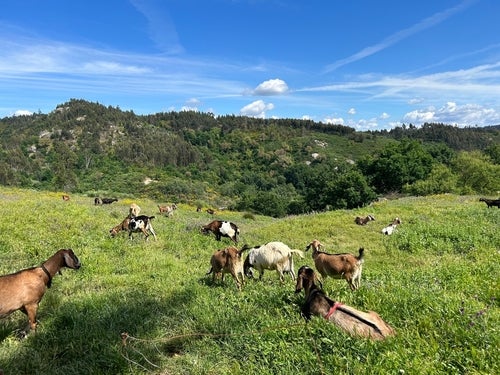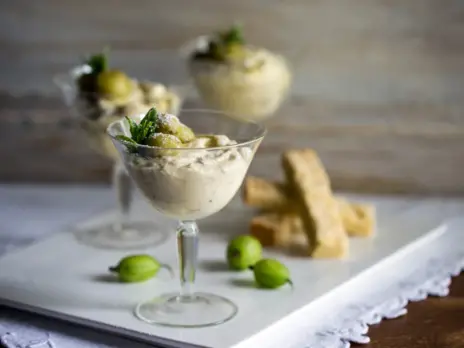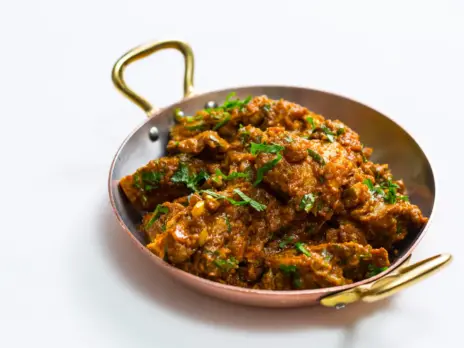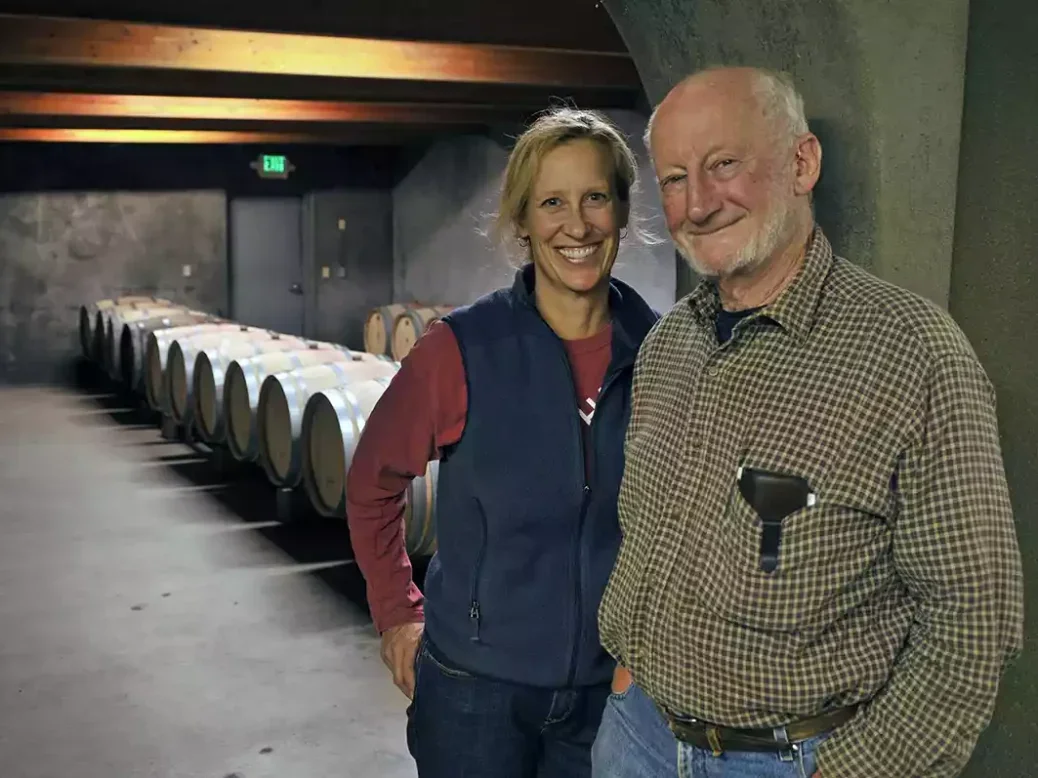
Margaret Rand enjoys the poised, subtle wines made by Lisa Togni at the winery established by her father Philip Togni on Spring Mountain.
Wines reflect their makers, do they not? And their terroir, of course, but their makers are part of their terroir. Would Robert Mondavi Cabernet Sauvignon Reserve 1974 (a wonderful wine I remember mostly for the almighty headache I once had afterwards) have been as exuberant had it been made by anyone else? And since we’re in California, would Philip Togni wines be quite as subtle and understated if they came from somebody more… well, exuberant?
They do, in one way. Lisa Togni is a lot more outgoing than her father Philip, and she has been in charge since 2007. She describes her father as a bit of hermit, happy in his Spring Mountain eyrie, while she lives with her children and her husband (he’s a house-husband, and I want to know where I can get one) and mixes with other winemakers—even more so since the fires of 2020, when if it hadn’t been for neighbors, she says, they’d have been done for.
It was another winery that came to her aid. A neighbor said, nobody’s going to come to help you—ring So-and-So, they have their own firefighters. So she did, and they came, and the winery and its vineyards were saved.
They were able to save it because there was bare earth between the rows. What a conundrum for anyone growing wine in a fire-prone area—which these days is potentially almost anyone. Permanent ground cover, which can lower soil temperature and is good for biodiversity and sustainability, can make fire protection much more difficult. And there’s nothing sustainable about a vineyard going up in flames.
The Bordeaux-in-Napa idiom
Lisa started going organic six or seven years ago but isn’t certified yet. She hasn’t made radical changes: The wine is still in the Bordeaux-in-Napa idiom and will stay there. She has no plans to grow the winery, no plans for world domination. She says that when she returned to the winery, it was initially as her father’s assistant, but gradually she did things her way. “He never expected me to mimic him.” Instead, she added to what was already a complex terroir.
Geographically, it consists of 25 acres (10ha) on Spring Mountain above the fog line, which is at about 1,000–1,200ft (300–360m). That means cooler days and warmer nights than the valley floor (8–10°F [4.5–5.5°C] cooler during the day) and more rain, though paradoxically in 2011 they didn’t have the botrytis pressure that some in the valley floor had to combat. “We don’t get the very hot afternoons that they get on the eastern side [of the valley], and we treat each side of our vines differently, to keep the hot afternoon sun away.”
The grape mix in the vineyards, and in the wine, is 82% Cabernet Sauvignon, 15% Merlot, 2% Cabernet Franc, and 1% Petit Verdot. This was the mix that Philip encountered when he worked at Château Lascombes, and it is the mix he decided was perfect. So, that’s what he planted. There are 18 blocks now, so 18 separate picking decisions, and the vines date from between 1985 and 1997; the original plantings were on AxR1 rootstock and had to be replaced, on 110R. Everything is dry-farmed and always has been.
Keeping it in the family
If that’s the geography, what about the people? Philip is from England, his wife Birgitta from Sweden. Philip was a geologist who studied at Imperial College, London, and when he wanted to buy some land in Napa, he found that there wasn’t much available. So he bought this patch on Spring Mountain, with a view to building a house and living there.
Geology to wine seems a logical step, but unusually it happened via a job at Shell. While looking for oil in South America, Philip decided he didn’t like the tropics and fancied doing something else. Then, in Madrid, he met Maynard Amerine, who encouraged him to study enology—which he did at the University of Bordeaux, under Emile Peynaud; he was one of the very first recipients of the Diplôme National d’Oenologue. While he was there, he worked at Lascombes, under Alexis Lichine.
Philip wanted to make his own wine but couldn’t afford to buy anywhere. Amerine suggested California, where Philip was taken on by Mayacamas. Then he worked for Gallo, Inglenook, Chalone, and Chappellet, where he made the 1969 Cabernet Sauvignon, and Cuvaison.
It was not until 1975 that he and Birgitta bought the land on Spring Mountain and built somewhere to live. They planted 4.5 acres (1.8ha) in 1971.
Lisa was born when Philip was at Chappellet; she has grown up with the family winery. She’s an only child; was there pressure to join? Absolutely not, she says. “Before I was born, Dad worked for someone who put pressure on their son, and he had to be there at the weekends and after school, and he resented it. Dad saw that.” At 18 she went off to UC Santa Cruz to read European history, “and I didn’t think that I would ever come back. St Helena was too small and insular.” But then she was offered a job in the research department at the Wine Institute in San Francisco, and she really enjoyed it. This was in 1991, so the 60 Minutes show had introduced Americans to the French paradox, and to the idea that red wine could be good for them. “I realized there was a lot in wine that was different from what I knew growing up.”
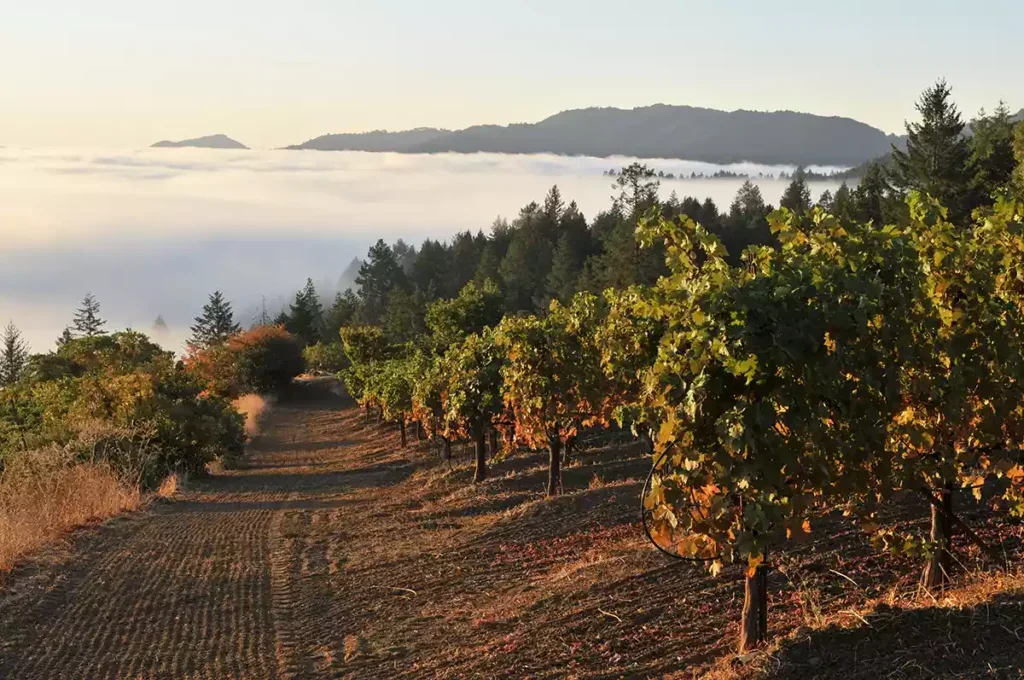
In the fullness of time, she was ready to go back, “work with my dad, and get to know our vineyard as an adult.” She worked a couple of harvests abroad, including at Château Léoville Barton, and “saw them as a family working together, with the history they have. It’s an idea I aspire to, keeping it in the family and doing it so well. It was a pivotal time for me, seeing how it’s done outside Napa. It made me more ready to come back.” She did a harvest in Australia as well, which was “even more New World than California… The tradition of Bordeaux drives what we do, but seeing what it’s like in Australia, where anything goes, we can pick and choose between the New World and the Old World.”
So, you see, the terroir is complicated. “I may be more open-minded to new ideas than Dad, more willing to interact with other people. I’m more of a people person than he is. But we think alike in our wish to honor our place.”
The winemaking is straightforward, though not entirely typical of Napa. The 18 blocks are treated and picked separately: “We threw away the refractometer, which was a fad of some years ago, and we go on taste.” The use of refractometers, she suggests, might have been one of the ways that Napa went to overripeness. There are just four ten-ton fermenters, and all the grape varieties are fermented together, according to when they are picked: one fermenter is filled, then another. So, some of the Cabernet Sauvignon probably ferments on its own. There’s a cold soak after picking, at 53°F (12°C) for three days, with pumping over; then they inoculate with yeast. Malo is in barrel.
The blend in the vineyard is the blend in the bottle. One of the tanks, which has chilling all the way down, is used for Tanbark Hill; the other three for the main wine.
Vintages vary, a lot. Perhaps surprisingly, Lisa doesn’t consider the cool years, like 2011, to be great. “They’re more approachable younger, but… They won’t necessarily last forever. We started picking on October 30 in 2011; some people had difficulty in getting ripe enough and spun it by saying that’s what people want. In 2020, we picked early because of smoke, so there was a shift in style that was not intentional, but we had to make the best of the conditions.” In 2022, they started picking on August 23; in 2023, it was six weeks later.
The great thing about these wines is their poise, their subtlety. Lisa tries to keep the alcohol level to 14% or less: “Over that, it’s not balanced.” The way they manage the canopy has changed because of the heat; lyre training gives the right balance of air, light, and shade. “So many people are using shade cloths now, but they have their own pitfalls.” She doesn’t believe that there’s a need to move away from Cabernet Sauvignon, however: “There’s a lot we can do to stave off something as extreme as not grow Cabernet.”
A bigger problem might be fire; not just fire on your doorstep, but fire 10 miles (16km) away, which causes smoke. “Insurance is five times more now, for less. Insurers are fleeing the market.”
Tasting
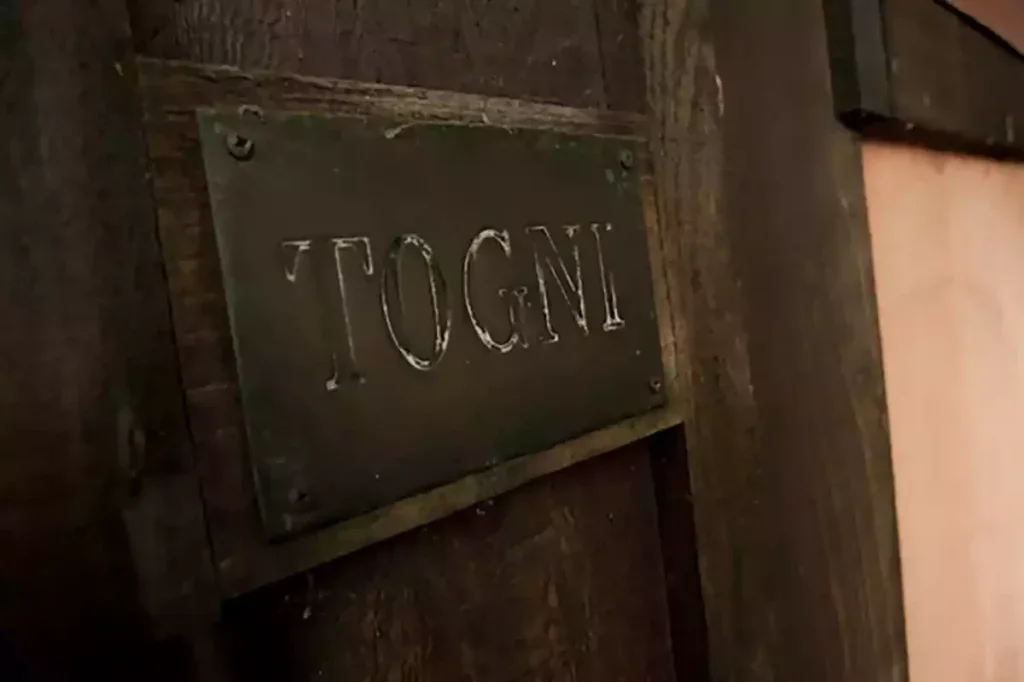
2019 Tanbark Hill Vineyard Cabernet Sauvignon
Savory black fruit on the nose, and spice. Bright, savory, and mouthwatering; very appetizing, full of dark spice, supple, with lovely texture, bright and brisk. Sits up and takes notice. | 90
2019 Philip Togni Vineyard Cabernet Sauvignon
More structure but still tucked in; brisk and stony; the tannins very fine. A pointed wine, focused, fresh, and alert, with good tension. | 92
2018 Philip Togni Vineyard Cabernet Sauvignon
More tannin. Tighter, and a firm structure, but very silky tannins. Tight but not rigid. Less expressive at first, but it emerges; very detailed. Quiet but eloquent. | 93
2014 Philip Togni Vineyard Cabernet Sauvignon
A restrained wine, poised and supple; delicate, even. Tobacco and black fruit, pure and detailed. Not much more to come, probably, though there is no hurry to drink; it’ll probably stay like this for a long while. | 89
2013 Philip Togni Vineyard Cabernet Sauvignon
Transparent, with some tertiary undergrowth notes appearing. Tobacco and spice, layered and complex, flavor after flavor. Long and detailed and still tight, but drinking beautifully. | 94
2008 Philip Togni Vineyard
Cabernet Sauvignon
Savory and supple, soft dead-leaves notes; very fresh, poised, delicate; licorice and silk; enveloping but not suffocating. Very long, very graceful. | 93
2004 Philip Togni Vineyard Cabernet Sauvignon
Nose still young, with leather notes. Sweet fruit, sweet spice, concentrated, with a dense core and a big finish. Velvet, opulent, with good freshness to balance. Tobacco, spice; very long. Beautiful. | 95
1999 Philip Togni Vineyard Cabernet Sauvignon
Tertiary, concentrated, fresh. Undergrowth and dead leaves, mushrooms, but so concentrated, alive, and very fresh. Big, expressive, still feels young in fact; still has bounce. Years to go. | 93

